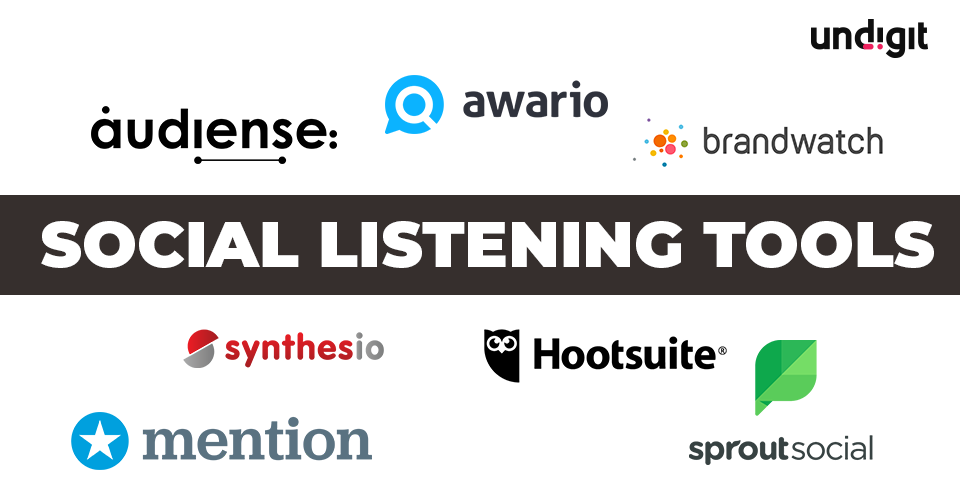In today’s digital age, social media has become an integral part of our lives. It has transformed the way we communicate, share information, and engage with others. Social media platforms are not just for personal use; they also play a significant role in shaping brand reputation and customer perception. To leverage the power of social media effectively, businesses need to adopt a robust social media listening strategy. This article will guide you through the process of developing an impactful social media listening strategy that can help you gain valuable insights, enhance your brand reputation, and drive business growth.
Tips for a Successful Social Media Listening Strategy

Here are some additional tips to enhance the effectiveness of your social media listening strategy:
- Be Proactive: Actively seek out conversations and engage with your audience rather than waiting for them to reach out to you.
- Stay Authentic: Maintain an authentic and genuine voice in your interactions. Be transparent, honest, and empathetic when responding to customer feedback.
- Track Relevant Keywords: Continuously update and refine your list of keywords and hashtags to monitor. This ensures that you capture the most relevant conversations.
- Leverage User-Generated Content: User-generated content is a valuable source of insights and social proof. Incorporate it into your marketing efforts to showcase real-life experiences and build trust.
- Collaborate with Different Departments: Social media listening is not just the responsibility of the marketing team. Collaborate with customer support, product development, and other relevant departments to gather diverse insights and drive cross-functional improvements.
Why is Social Media Listening Strategy Important?
Social media listening is vital for businesses as it provides real-time feedback, helps in understanding customer preferences, and enables brands to proactively address customer concerns. Here are some key reasons why social media listening is important:
- Reputation Management: By monitoring brand mentions and sentiments, businesses can promptly respond to customer feedback, address complaints, and protect their brand reputation.
- Competitor Analysis: Social media listening allows you to track your competitors’ activities, analyze their strategies, and identify potential gaps or areas for improvement in your own business.
- Identifying Trends and Opportunities: By keeping a close eye on online conversations, businesses can identify emerging trends, industry insights, and opportunities for innovation or product development.
- Customer Insights: Social media listening helps in gaining a deeper understanding of your target audience, their needs, preferences, and pain points. This valuable customer data can drive more targeted marketing campaigns and personalized experiences.
Setting Goals and Objectives
Before diving into social media listening, it’s crucial to define your goals and objectives. What do you want to achieve through social media listening? Some common objectives include:
- Brand Reputation Management: Enhance brand perception, address customer concerns, and manage online reputation effectively.
- Customer Experience Improvement: Gather customer feedback, identify pain points, and enhance the overall customer experience.
- Competitor Analysis: Monitor competitors’ activities, benchmark against industry leaders, and identify areas for improvement.
- Market Research: Gain insights into customer preferences, emerging trends, and market demands.
Once you have defined your goals, you can align your social media listening strategy accordingly.
Identifying Relevant Social Media Channels
To make the most out of your social media listening efforts, it’s crucial to identify the social media channels that are most relevant to your business. Consider your target audience, industry, and the platforms where your customers are most active. Each social media platform has its unique characteristics, user demographics, and types of conversations. Focus on the platforms where your target audience is actively engaging and where you can maximize your impact.
Selecting the Best Social Listening Tools

Numerous social media listening tools are available in the market, offering various features and functionalities. It’s essential to choose the right tools that align with your goals, budget, and specific requirements. Some popular social media listening tools include:
- Hootsuite: Allows you to monitor and manage multiple social media accounts from a single dashboard.
- AIM Insights: Provides in-depth social media analytics and sentiment analysis.
- Sprout Social: Offers a suite of social media management and listening tools.
Research and compare different tools before making a decision, ensuring they provide the necessary features to meet your listening objectives.
Monitoring Brand Mentions and Conversations
Once you have identified the relevant social media channels and selected the right listening tools, it’s time to start monitoring brand mentions and conversations. Set up alerts and notifications to receive real-time updates whenever your brand or relevant keywords are mentioned. Track hashtags, industry-related terms, and user-generated content to gain a comprehensive view of the online conversations.
Analyzing Sentiments and Trends
Social media listening goes beyond tracking mentions; it involves analyzing sentiments and identifying trends. Use sentiment analysis tools to determine whether online mentions are positive, negative, or neutral. This analysis helps you understand the overall perception of your brand and take appropriate actions to address customer sentiments.
Identifying trends is equally crucial. Look for patterns, recurring topics, or emerging discussions that can provide valuable insights into market trends, customer preferences, or industry developments.
Engaging with Customers and Influencers
Social media listening is not just about monitoring; it’s also about active engagement. When you come across customer feedback, questions, or complaints, make it a priority to respond promptly and professionally. Engage with your audience, acknowledge their concerns, and provide helpful solutions. Building meaningful relationships with customers can enhance brand loyalty and advocacy.
Additionally, identify influencers and thought leaders in your industry. Engage with them, share their content, and participate in relevant discussions. Influencers can amplify your brand’s reach and credibility.
Tracking Competitors and Industry Insights
Social media listening allows you to keep a close eye on your competitors. Monitor their social media activities, content strategies, and customer interactions. Identify their strengths, weaknesses, and areas where you can differentiate your brand. By understanding your competitors, you can stay ahead of the curve and capitalize on untapped opportunities.
Furthermore, leverage social media listening to gain industry insights. Stay updated on the latest trends, news, and happenings in your industry. This knowledge can help you adapt your strategies and make informed business decisions.
Measuring and Reporting Success
To gauge the effectiveness of your social media listening strategy, it’s important to establish key performance indicators (KPIs) and track them regularly. Some common metrics to consider include:
- Sentiment Analysis: Measure the sentiment distribution of brand mentions over time.
- Engagement Metrics: Track the number of likes, shares, comments, and retweets your brand receives.
- Influencer Impact: Evaluate the reach and engagement generated by influencer collaborations.
- Customer Satisfaction: Assess customer satisfaction scores through surveys or feedback forms.
Regularly analyze and report on these metrics to understand the impact of your social media listening efforts and make data-driven improvements.
Integrating Social Media Listening Strategy with Overall Marketing Strategy
To maximize the value of social media listening, integrate it with your overall marketing strategy. Social media listening should not exist in isolation but should be seamlessly integrated into your broader marketing efforts. Use the insights gathered from social media listening to inform your content strategy, social media campaigns, and customer engagement initiatives. Align your messaging, tone, and content with the feedback and sentiments expressed by your audience on social media platforms.
Ensuring Data Privacy and Ethical Considerations
While conducting social media listening, it’s crucial to prioritize data privacy and adhere to ethical guidelines. Ensure that you are compliant with applicable data protection regulations, such as the General Data Protection Regulation (GDPR). Obtain proper consent when collecting and analyzing user-generated content. Respect user privacy and use data responsibly and securely.
Staying Up-to-Date with Changing Social Media Listening Strategy Landscape
The social media landscape is constantly evolving, with new platforms, features, and trends emerging regularly. Stay updated with the latest developments in the social media industry to adapt your social media listening strategy accordingly. Attend industry conferences, follow thought leaders, and engage in continuous learning to stay ahead of the curve.
Conclusion
A well-executed social media listening strategy is a powerful tool for businesses to gain a deeper understanding of their audience, enhance brand reputation, and drive business growth. By actively monitoring and analyzing online conversations, businesses can gather valuable insights, identify trends, engage with customers, and stay ahead of the competition. Remember to choose the right listening tools, set clear goals, and integrate social media listening into your overall marketing strategy to maximize its impact.
To experience the benefits of an advanced social media listening platform and take your strategy to the next level, request a demo from AIM Technologies today. Discover how our innovative solutions can help you unlock the full potential of social media listening and achieve your marketing objectives.
FAQs
1. How often should I monitor social media channels?
- The frequency of monitoring social media channels depends on your business’s size, industry, and level of engagement. However, it’s generally recommended to monitor social media channels at least once a day to stay updated and respond promptly to customer feedback.
2. Are there any free social media listening tools available?
- Yes, some social media listening tools offer free versions or trial periods. Examples include Google Alerts, TweetDeck, and Social Mention. While free tools may have limitations, they can still provide valuable insights for businesses with limited budgets.
3. How can social media listening benefit small businesses?
- Social media listening is particularly beneficial for small businesses as it helps them understand their target audience, monitor brand reputation, and identify growth opportunities. It enables small businesses to compete on a level playing field with larger competitors by leveraging customer insights and engaging directly with their audience.
4. Can social media listening help with crisis management?
- Absolutely. Social media listening allows businesses to monitor and address negative sentiments or crises promptly. By responding quickly and transparently, businesses can mitigate the impact of a crisis, maintain brand reputation, and regain customer trust.
5. How can I measure the ROI of my social media listening efforts?
- Measuring the ROI of social media listening can be challenging, as its impact is often indirect. However, you can track metrics such as sentiment analysis, customer engagement, customer satisfaction scores, and social media reach to gauge the effectiveness of your strategy. Additionally, monitoring the impact on brand reputation, customer loyalty, and sales can provide valuable insights into the ROI of your social media listening efforts.




